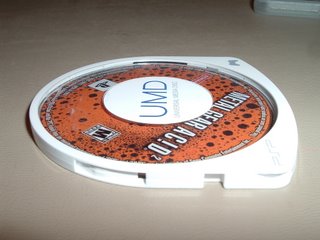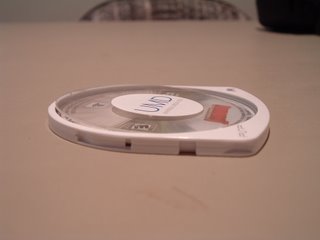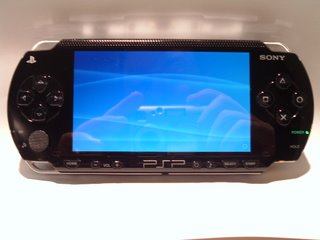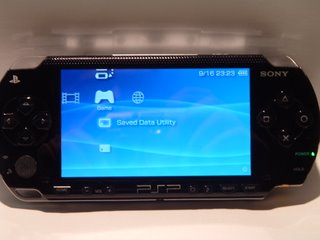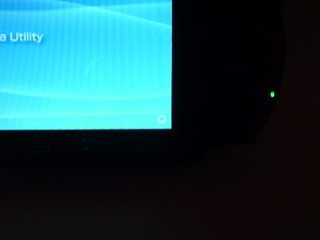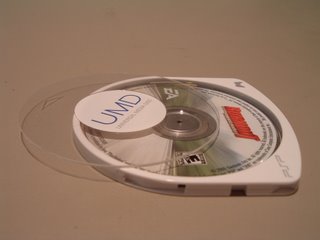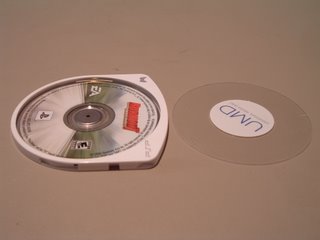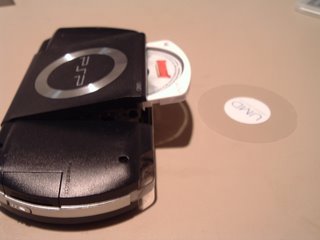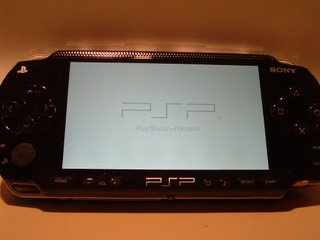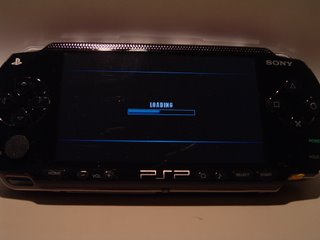Platform: PlayStation 2
Publisher: Sony Computer Entertainment America
Release Date: 11/02/2004
Game Type: First Person Shooter
Genres: Science Fiction, Military
Single Player Modes: Story, Skirmish
Multiplayer Modes: Console, Online
ESRB Rating: M (Blood, Strong Language, Violence)
Current Price (used): $15 USD (GameStop.com)
Grade: B
General Comments
When
Killzone was in development, it was hailed as the "Halo Killer", the title PS2 fanboys were waiting for, the game that would prove once and for all that anything the Xbox could do, the PS2 could do as well or better. But anyone with even a casual knowledge of the technology differences between the two platforms knew that this claim could only be marketing
uber-hype. And so it was.
The problem with over-hyping a product is that it creates expectations that cannot be satisfied. It short-sightedly trades a spike in pre-review sales for a slump in post-review profit, as the reviews will reflect those disappointed expectations. And only the most rabid of fanboys will buy solely on the strength of the publisher's pre-release hype.
The reviews did reflect that disappointment, with the average score on
GameRankings.com coming in at a disappointing 72.3% ("C-" grade), compared to
Halo's 95.8% ("A"). Similar discrepancies are seen in the units-shipped figures, with
Halo coming in at over six million and
Killzone less than two. Some will say that the financial figures don't reflect the true popularity of each title, as
Halo's been out for more than twice as long, and for a long time it came bundled with every new Xbox. Which would be a more convincing argument if it weren't for the fact that
Halo 2 came out around the same time as
Killzone, and has already sold more than
five million copies.
So, which is correct, the reviews or the hype? Is
Killzone better than
Halo and worth buying a PS2 to play, or is it a yawn-inducing, barely pasable shooter? The truth is somewhere in the middle.
Game Description And Initial Impressions
Killzone is about the invasion of the planet Vekta by gas-mask-wearing Helghast troops. The planet Helghan became home to a group of people exiled from the rest of insterstellar society, who have since built a mighty war machine and are now exacting revenge on their perceived oppressors by conquering them. Vekta has the misfortune of being Helghan's nearest neighbor, and therefore the first target in the campaign against the ISA.
If this all sounds familiar, it should; the backstory closely parallels the historical events surrounding the start of World War II. This makes Helghan the equivalent of Nazi Germany, and Vekta a future version of Poland.
The single-player game puts me in the combat boots of Jan Templar, a captain in the ISA Defense Forces, and later provides the chance to play as any of the members of his four-man squad. Each of the four has unique strengths; Templar is the all-around soldier who can use any weapon. Luger is an assassin who gets a fully automatic sniper pistol and night-vision goggles. Rico is the heavy-weapons specialist who carries a chaingun. Hakka is a half-Helghast spy who can get better accuracy with Helghast weapons and can operate Helghast equipment. The goal is first to get the planet's hacked orbital defenses back online, and later...well, that would be telling.
After a cutscene summarizing Helghast history and showing the first moments of the invasion of Vekta, the game presents the main menu. After choosing the single-player campaign, there is a brief cutscene that sets up the tactical situation. Then I am thrown into combat, attempting (as Captain Templar) to repel the Helghast assault on a Vektan city.
When I first started playing the campaign, I got a sinking feeling in my gut. I began having flashbacks to
Medal of Honor: Rising Sun and its rail-shooter sequences. The game opens with Templar and other soldiers in a trench, with a mass of Helghast troops rushing their position. I, as Templar, must stay in a fixed position and shoot down enemies before they can reach the trench. This is followed by movement to a new trench and more defensive fire. Much of the first mission follows this pattern.
Now, I have nothing against shooting galleries or rail shooters
per se. I'm sure they're a lot of fun for the people with the twitch reflexes to succeed at them. I'm just not one of them. In fact, I don't think I
ever was one of them. But when I buy a first-person shooter, I have a certain expectation that there will be
movement and
tactics, use of cover and concealment, perhaps even a flanking maneuver. Rail shooters and shooting galleries offer none of these. They are unwelcome in my first-person shooter, except in very small portions. Less is more. If I want
The House of the Dead or
Beachhead 2000, I know where to find them. And when such scenes do appear in my FPS, they should be a welcome respite from more difficult portions, offering overwhelming firepower with which to mow down great swaths of enemies while laughing maniacally.
And so I put
Killzone away for a long time, turning to more rewarding (or so I thought) games. When I did return to the single player game, it was only to practice for online multiplayer with a distant friend.
I quickly discovered that the shooting galleries of the first mission are not ubiquitous. Gameplay after the first mission is more about attacking enemy forces and driving through them than it is about repelling their assaults. My interest began to revive, and I played it almost exclusively until I finished it.
Presentation
Story
I found the storyline to be good, but not outstanding; it's a fairly standard war story, which is not surprising considering the situation is a thinly-disguised version of World War II. The characters all have distinct personalities and their own backstories, and conflicts between the members of my squad make for some watchable cutscenes. The dialogue is (mostly) well-written, and there are some memorable lines. On the other hand, there are plot holes big enough to drop an asteroid through, and the villain's ending speech is so bad that it's obvious the actor was embarrassed to deliver it.
Graphics
The graphics are pretty good, and look like they're pushing the limits of the PS2's technology. Unfortunately, "pushing the limits" also means that frame rates sometimes suffer. Widescreen is available but not 480p. Polys and textures seem pretty high on the people, and medium elsewhere. I'd say the models and textures for the characters are comparable to the best in other PS2 games, including
Silent Hill 2 and
Shadow of the Colossus. Draw distance is limited, and there's a little bit of popup to be seen here and there, but nothing too distracting. What is noticeable are the occasional seams visible between some of the polygons for the environment. Still, it wasn't so bad that it interfered with my enjoyment of the game. And once an APC turret briefly appeared to be ten times its normal size, though that only lasted for a moment. Animation is good, with most character movement looking pretty natural. The sole exception I noticed was when a killed soldier would do the "ragdoll jitterbug" as it failed to find rest in death. But that comes with almost any game that uses ragdolls. Weapon animations, especially reloading, are outstanding and easily on a par with anything I've seen elsewhere. Animation of vehicles and other environmental objects is of equal quality. Physics is cheated into the game using scripted animations and particles; a system like Havok just isn't feasible within the limitations of the PS2. But the cheats are pretty good. Notably enjoyable ones are windows shattering, water cooler bottles exploding and bouncing around, tank turrets blasted into the air, and guard towers collapsing.
Art Direction
Art direction is very good bordering on excellent, doing a fine job of giving a gritty, war-torn feel to all the areas. Buildings, vehicles, scenery and people look quite realistic. The only oddity I found in this area was the lack of contrast. Everything is in muted shades of white, grey, blue, brown and green, with hardly a saturated color to be found anywhere. The most colorful thing in the game is the yellow-orange glow emanating from the Helghast soldiers' goggles. This muted color scheme works well when the environment is a series of trenches reminiscent of World War I, or an industrial zone of concrete and steel. It is less suited to city parks, malls or jungles.
The designs look like near-future versions of contemporary ones, from the weapons and vehicles to buildings and clothing. No death-ray handguns, no holograms. The ISA designs have a kind of NATO feel to them, while the Helghast ones have a more WWII German or Cold War eastern european look.
Sound Design
The sound design is outstanding. No detail in this department is overlooked, from the
zip of near-misses whizzing by my head, to the
crunch of combat boots on gravel, to the atmosphere of distant explosions and gunfire in the cities and of birds and insects in the jungle. The guns each have a distinctive sound both in firing and reloading, with the clip-fed ISA assault rifle barking and the barrel-fed Helghast version whining as the electric motor shoves fresh rounds into the chamber. This aspect of the presentation is significantly responsible for giving the player a feeling of immersion. There are however some occasional sound glitches where a particular sound can be lost. It's very odd to hear ejected shells tinkling but not the weapon's report.
Music
Music is sparse. It's only really heard in the introductory cutscene, and in the cutscenes at the beginning and end of each chapter, but what it has is competently done, matching the scene's mood and timing.
Voice Acting
The voice acting is very good; the lines are delivered with conviction by the various actors, some of them known in film and television (such as Ronny Cox and Brian Cox). The cutscenes are particularly enjoyable in this regard. The only real problem is that there's not enough of it. Hearing the same few lines repeated over and over during hours of gameplay becomes a little repetitive, no matter how well they're spoken. I'm not very sensitive to that sort of thing, so it didn't hurt my enjoyment of the game much.
Overall
So overall, I give the game's presentation high but not outstanding marks. The sound design, animation, voice acting and art design all add to the enjoyment, while the repetitive dialogue, minor graphical glitches and constant drabness to every environment all mildly subtract from it.
Playability
Controls
The controls are fairly straightforward. The game offers a layout that seems natural almost immediately, and the ability to customize the individual buttons - a feature that other console shooters would do well to emulate. I only felt the need to alter two of the settings; I changed crouch from hold to toggle, and I switched the sprint and crouch buttons. It's just too awkward to try to move the left stick to run while attempting to hold the left stick in the clicked position. So now L2 is sprint, and L3 toggles crouch...which makes more sense. Who needs to go into a crouch
while running? I never did. The controls feel tight and responsive, though I could wish for a little more fine control near the stick's dead zone without having to sacrifice turning speed by reducing the control sensitivity. The only glitch I noticed was that toggling crouch off while positioned under a low overhang results in crouch not being toggled off at all.
Weapons
The game has a weapons system very similar to that of
Halo, except that instead of two weapons three can be carried. There is usually plenty of ammo and weapons to take from fallen soldiers, increasingly enemy soldiers as the game progresses.
All the weapons have a solid feel to them, with more heft and recoil than in other sci-fi shooters such as
Star Trek Voyager: Elite Force or even
Halo.
Some have complained about the sniper rifle's zoom targeting system, finding it awkward. It's certainly the case that mouse adapters such as the Max Shooter or SmartJoy Frag can't be used with this weapon. But I think the awkwardness serves an important purpose in balancing the multyplayer game; the extra time it takes to aim the weapon prevents it from making the wielder nigh-invulnerable.
And some of the weapons are just plain nifty, like the single-shot grenade launcher pistol, or the four-barrel AA gun.
Learning Curve
As a result of the rational control scheme, and the tutorial integrated into the first mission (complete with a controller image that shows which buttons to press), the learning curve is fairly short. I was competent with the controller within the first five minutes of gameplay.
User Interface
The user interface is equally straightforward, from the standard FPS hud display to the no-nonsense menus. The only oddity in this area is that the widescreen/standard video setting doesn't stick; every time I start the game, this setting is set to standard. It's a minor annoyance having to change it to widescreen every time I start the game. On the plus side, every cutscene can be skipped except for the publisher and developer logos when the game first loads. Guerrilla deserves praise for this, as there's little that's more irritating than having to watch an unwanted cutscene, whether it's because it's the second playthrough, or because of a desire to immediately retry the boss fight (I'm talking about
you,
Final Fantasy X).
Difficulty
The difficulty is moderate, even on the easiest of the three difficulty levels. I generally play shooters on the "normal" or "standard" difficulty level and have an enjoyable experience. Killzone defaults to the easiest difficulty level, and I have left it there. Even so, I found myself dying more and more frequently as I progressed through the chapters. Particularly when the enemy started using grenade launchers. What helps in this regard is that even though health packs are fairly rare, the life meter partially recharges after injury, in a system reminiscent of
Halo's.
Save System
This brings us to the topic of the save system, which like the life meter is similar but not identical to that of
Halo.
Killzone is divided into eleven chapters, with each chapter divided into several missions, and each mission having zero or more checkpoints. There is a single save for each player profile, and mission-end saves instead of save-anywhere. One can replay an earlier chapter, at the cost of losing one's progress within the latest chapter. Checkpoints provide places within a mission to retry from if killed, but are not saved to the memory card and cannot be loaded when starting play.
I have mixed feelings about this kind of save system. On the positive side, it allows the developers to control the pacing of the action, and to raise the stakes for the player in order to increase feelings of suspense. When one stands to lose a half-hour of progress instead of just a few seconds, the fear of getting killed is higher. When done well, it increases immersion by keeping the player moving forward instead of playing the same few seconds over and over. On the negative side, it can lead to frustration and conflicts with real life. It's frustrating for me to play the same 20 minutes of action over and over just to get to the part where the bad guy with the uber-weapon kills me with one shot. And who wants to have to lose a half hour of progress because there was a power outage or it's someone else's turn to use the console? When save points are too far apart, they detract from the enjoyment of the game.
I must mark
Killzone down for all too frequently having save points so far apart that when I died I turned the console off rather than repeating the half-hour of fighting I'd just lost. That's not
play, it's
work.
Length
Killzone is plenty long; there are about 27 hours of gameplay included. There are 36 missions, each taking about 45 minutes to complete (counting replays when killed). I'm assuming that all missions are played as Templar, and all are played using my play style (which is to take cover for healing when shot, use cover to avoid enemy fire, and pick them off from a distance). Using a different character such as Rico, or a run-and-gun style (assuming survival that way) will probably get a quicker playthrough.
I'd say it's almost
too long. For some players, a game is all about the action, and the story is completely unimportant. They want to get to the running and shooting, and the only thing they're interested in is the action and the variety in it. Such players are likely to downgrade a title if it's short, because they want more shooting. They're also more likely to favor multiplayer gaming. Others, such as myself, are more interested in the game as a total experience, in which the action is just part of a larger whole, which includes the story. Repetitive gameplay just to make the game longer detracts from the total experience and leads to a kind of boredom.
Ico, at about 10 hours, would be disparaged by pure-action fans for being too short. I, on the other hand, thought its length was just right. And so I became impatient for the next
Killzone story development.
Level Design
Level design is fairly linear. Again, given the limitations of the PS2, this is not surprising. Open levels require more polygons, textures and models, and therefore more processor power and memory than linear ones. There are ways around this, such as streaming in higher-detail textures and models from disk as the viewpoint approaches them. The best example I know of this technique is
Shadow of the Colossus, which has no levels and everything is streamed as one moves around the map.
Killzone does some of it as well, but even this approach has its limitations as one can see while playing - if one approaches a person or object faster than the graphical detail can be loaded, the person or object looks blurry until the load completes, at which point the view suddenly "focusses". The least linear level I've encountered is the battle in the city park, which is open enough that I got lost a couple of times trying to find the exit to the mall.
But within the linear nature of the levels, Guerilla has done a fine job of providing a variety of situations to fight in. There have been city areas, military bases, swamps, jungles, trenches, desert, and snow-covered mountains. I haven't seen yet any of the repetitive level design used to make
Halo longer. Each area within each environment has presented its own unique tactical challenge. One thing I have noticed that's nifty - the level designers like to force the player into attacking enemies holding a superier tactical position. For instance, in one level my squad must move down a shallow river with steep banks. As soon as the enemy sees me, the tops of those banks fill with soldiers raining fire down on my position. In other places, the enemy has grenade launchers, forcing me to rush their position even though my preferred style is to use cover. Outstanding!
The one minor complaint I have with the level design is that it violates the "curb rule". This is the rule that states, if an obstacle could easily be stepped over or climbed by the character being played, don't make it impassable. If the player isn't supposed to leave Main street, don't make the barrier a six-inch-high curb! The two most glaring examples of this are a speed-bump-sized hump in a jungle road that the player should be able to walk over and can't, and the inconsistency where some 3-foot-high sandbag barriers can be climbed over and some can't. It's not annoying enough, though, to seriously interfere with enjoyment of the game.
A.I.
Character AI is pretty good in enemies and only fair-to-passable in allies. Enemies will use cover, peeking over the top and only stepping out long enough to shoot. They even attempt to figure out when I'm reloading, and wait until then to break cover and fire. They attack in groups, and at least once appeared to be trying to flank my squad (though that was more likely a result of their initial placement). They are aware of what happens to their comrades; on one occasion I snipered a Helghast soldier in a busy camp and all the others immediately scattered, seeking cover. They will try to advance on my position if they can do so without being seen. This cover-seeking behavior sometimes works to their disadvantage, however; there were times when there were so many enemy soldiers that they could have overrun my squad had they chosen to rush us. Instead they continued to hide. Another exploitable behavior is their method for deciding when to break cover. They think I'm reloading when I stop firing for a couple of seconds, so I can fire a single shot, wait for an enemy to step out, and shoot him.
My squadmates, on the other hand, don't use cover much, so it's a good thing they're invulnerable. They don't act invulnerable, though. After taking fire they will retreat, leaving me to advance on the enemy myself. Sometimes they will advance in front of me, and in those cases they will do some damage to the enemy. And sometimes they will cross my line of fire. Most of the time they stay behind me, and impede me when I try to back up out of the enemy's line of fire. So my mates were helpful some of the time, and a lot of the time they got in my way.
Replay Value
I'm not going to say much about replay value here, but save most of that for future reviews. I will note that I was able to play as any of the four squad members, and each has unique strengths and vulnerabilities. For instance, Luger gets a silenced machine pistol which doubles as a sniper weapon, and can sneak up on enemies. Rico gets a chain gun. I will also note that there are the multiplayer modes, which add a different kind of replay value. I expect to cover multiplayer in a future review.
Emotional Impact
Accomplishment
I did get significant feelings of accomplishment at various points within the game. Whether it was reaching the end of a mission, eliminating a well-dug-in enemy, or surviving a massive onslaught even when seriously outnumbered, I felt like I had gotten somewhere. This was one of the major factors that kept interest up.
Awe
I didn't find much that was awe-inspiring in this game; there were two parts that came close, both involving destruction on a large scale, but nothing as jaw-dropping as the first sight of the final enemy in
Shadow of the Colossus. There was nothing even on the scale of the final scene in
Halo.
Cheer
There should have been moments to cheer at, when then villains met their end and the heroes were victorious. Unfortunately, the villains were not portrayed as sufficiently sadistic nor the heroes as sufficiently sympathetic. There are no
Raiders of the Lost Ark or
Die Hard cheers here.
Cool
The closest the game came to the kind of ''That is so cool!" reaction inspired by
Prince of Persia: The Sands of Time or
007: Everything or Nothing was in some of the weapon reloading and destruction animations - particularly the grenade launcher revolver and guard tower collapse. Not especially thrilling, to be sure, but they are
somewhat cool.
Frustration
Feelings of frustration arose mostly as a result of the save system, which was partly the result of poor design, and partly the result of technical limitations of the PS2. It could be worse;
SOCOM 2: US Navy Seals has longer missions and nary a checkpoint to be found.
Fun
Is this game fun? Yes it is. Once I got into the flow of the action, immersion took over, I stopped noticing the technical glitches, and I became part of the world of
Killzone. It's
fun to wipe out a nest of dug-in Helghast with a well-placed lob from a grenade launcher. It's
fun to take out an enemy sniper by destroying the guard tower he's hiding in. And it's
fun to charge into a dozen Helghast, mowing them down with a squad automatic weapon before they can get in more than a shot or two.
Funny
Is this game funny? Not particularly. There are a few comic relief moments in cutscenes, once about Templar and Luger's past relationship, but otherwise it's the bickering between the Helghast-hating Rico and the more-civilized-than-thou half-Helghast Hakka. These comic relief moments are rare, so for the most part
Killzone is a serious action-adventure war story.
Interest
Between the pretty good immersion factor and the fun gameplay, my interest was strong and I kept playing until I reached the end.
Outrage
I only experienced one moment of outrage in the game. I was approaching a hill with enemies dug in at the top. As soon as they saw me, they started lobbing grenades, so I turned to run back out of range and behind cover. On the path I'd just come from and cleared, four Helghast appeared in front of me and started blasting. I don't mean they stepped out of hidey holes, I mean they popped into existence as if they had a teleporter. The game cheated!
Well, the air turned blue around me from the names I called the level designer, but I survived the encounter so the outrage didn't last long.
Shock
There is a single shock in the game, when the identity of the traitor is revealed. But this didn't shock me at all, since I'd already figured it out from clues provided in the game's cutscenes. Would it shock someone who hasn't already figured it out? Probably.
Urgency
There isn't a lot of this in the game. It doesn't have any ticking clocks, no goals that have to be reached within a certain time or before the enemy reaches theirs. Instead, like many other games in which all events are triggered by player action, it tries to create an artificial sense of urgency by having characters in the game
claim that there are deadlines (when there aren't) or complain that you're moving too slow. I was unconvinced by this technique, and have trouble believing that anyone else would fall for it.
Summary
Overall, I'm going to give
Killzone a grade of B. The fun gameplay, impressive voice acting and sound, and strong visual presentation raised the score, while the mediocre storyline, flawed save system and minor glitches lowered it.
Would I recommend buying this game? Yes. At its current price of $15 USD it's a good value if you like military-themed and science-fiction-themed console shooters.
Grading Chart
Overall Grade: B
- Presentation: B+
- Story: B-
- Graphics: B+
- Frame Rate: C-
- Polygon Count: A-
- Textures: B+
- Seams: C-
- Glitches: C
- Animation: A
- Character Animations: A
- Weapons: A
- Vehicles And Other Environment: A-
- Art Direction: B+
- Theme: A-
- Color: C+
- Design: B+
- Sound: A
- Music: B+
- Voice Acting: A-
- Playability: B+
- Controls: A-
- Weapons: A
- Learning Curve: A
- UI: A
- HUD: A
- Menus: A
- Cutscene skippability: A-
- Difficulty: C+
- Save System: D+
- Length: C+
- Level Design: A-
- A.I.: B-
- Emotional Impact: C+
- Accomplishment: A-
- Awe: C
- Cheer: D
- Cool: C
- Frustration: C-
- Fun: B+
- Funny: C+
- Interest: A-
- Outrage: B-
- Shock: C
- Urgency: C-
